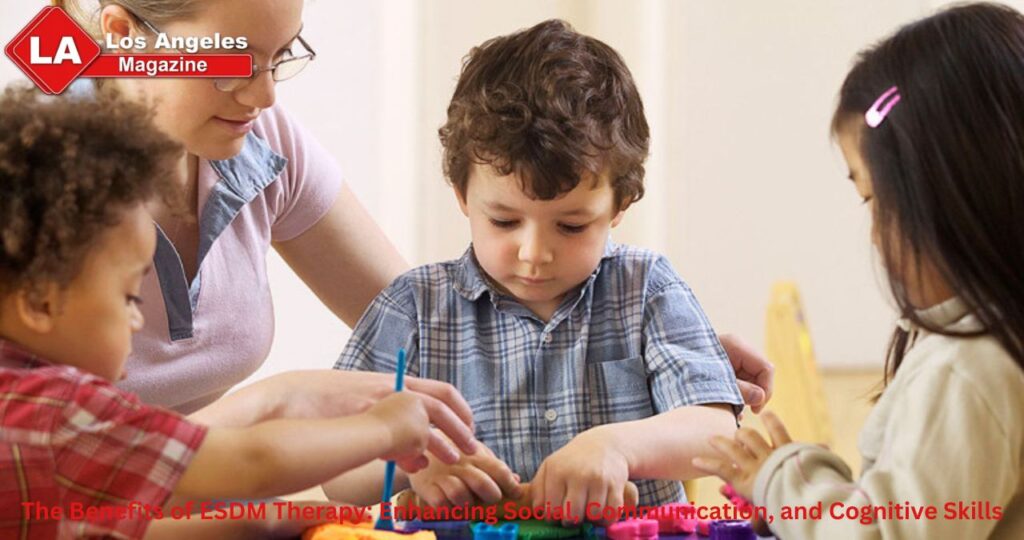Children with autism spectrum disorder (ASD) depend much on early intervention. Through play-based learning, the Early Start Denver Model (ESDM) is a treatment meant to assist young children acquire fundamental life skills. With an eye toward improving social, linguistic, and cognitive abilities, this method helps kids lay solid groundwork for future independence and expansion.
Mental Skills
Children with autism spectrum disorder (ASD) need early intervention especially. A very successful therapy in helping young infants acquire vital life skills is the Early Start Denver Model (ESDM). It emphasizes learning via play, so guiding the natural process of development.
Research-based therapy meant for young children with autism spectrum disorder (ASD) is the Early Start Denver Model (ESDM). Children’s social, communication, and cognitive skills grow under this play-based method. To assist youngsters, learn and develop, this therapy emphasizes on normal relationships and daily tasks. ESDM’s good influence on infant development is well known.
Improving Social Competency
Children that use esdm develop robust social skills. By use of organized activities and play, it promotes favorable interactions. Youngsters pick up sharing, turn-around behavior, and social cue response. Making friends and developing relationships call for these abilities.
Social growth depends much on joint attention. A child therefore develops to concentrate on the same thing or activity as another individual. ESDM strengthens joint attention by means of games and play-based approaches. This helps kids interact more effectively in social environments.
Still, another crucial ability ESDM emphasizes is imitation. Youngsters pick up words, facial emotions, and behaviors. Therapists inspire imitation by use of entertaining and interesting exercises. This enhances youngsters’ communication skills and allows them to grasp social situations.
Developing Interpersonal Skills
Everyday living depends on communication. ESDM aids in children’s improvement of nonverbal as well as spoken communication. Many kids with ASD find it difficult to grow linguistically. ESDM promotes speech and language abilities through planned play.
Therapists give eye contact, gestures, and facial expressions top priority. These nonverbal abilities enable kids to communicate and comprehend their feelings. They get increasingly at ease socializing over time.
ESDM offers substitute communication tools for youngsters who find it difficult to talk. These covers applying assistive technology, sign language, or images. These instruments enable young people more precisely communicate their wants and emotions.
Improving Cognitive Capacity
Learning and problem-solving call for cognitive ability. Through play-based exercises, ESDM aids in children’s acquisition of thinking and reasoning abilities. These pursuits inspire invention, inquiry, and curiosity.
ESDM incorporates cause-and- effect learning in great measure. Youngsters come to see that their activities have results. A toy sounds, for instance, when they press a button. This sharpens their problem-solving skills and allows them to grasp trends.
ESDM helps also with memory and attention. Activities are meant to keep kids interested and attentive. They grow to be more independent and focused in completing activities throughout time.
Scientific Studies Advancing ESDM
Studies reveal that esdm helps children with ASD have favorable results. Studies show gains in cognitive ability, social skills, and language among other areas. Early ESDM therapy recipients demonstrate greater development than those who do not.
Children that engaged in ESDM reportedly had improved communication skills and higher IQ. ESDM also proved to assist increase brain activity linked to social interactions. These results emphasize the need of early intervention.
ESDM is a versatile therapy available in several environments. It can be given at homes, in rehabilitation facilities, or in educational institutions. To carry on the therapy outside of sessions, parents and other caregivers need training. This enables youngsters to grow faster and modify their abilities to fit daily living.
ESDM’s success rests in its interesting and natural approach. It feels unlike conventional therapy. Rather, it emphasizes significant interactions and plays. For young children, this helps them to enjoy and benefit from education.



